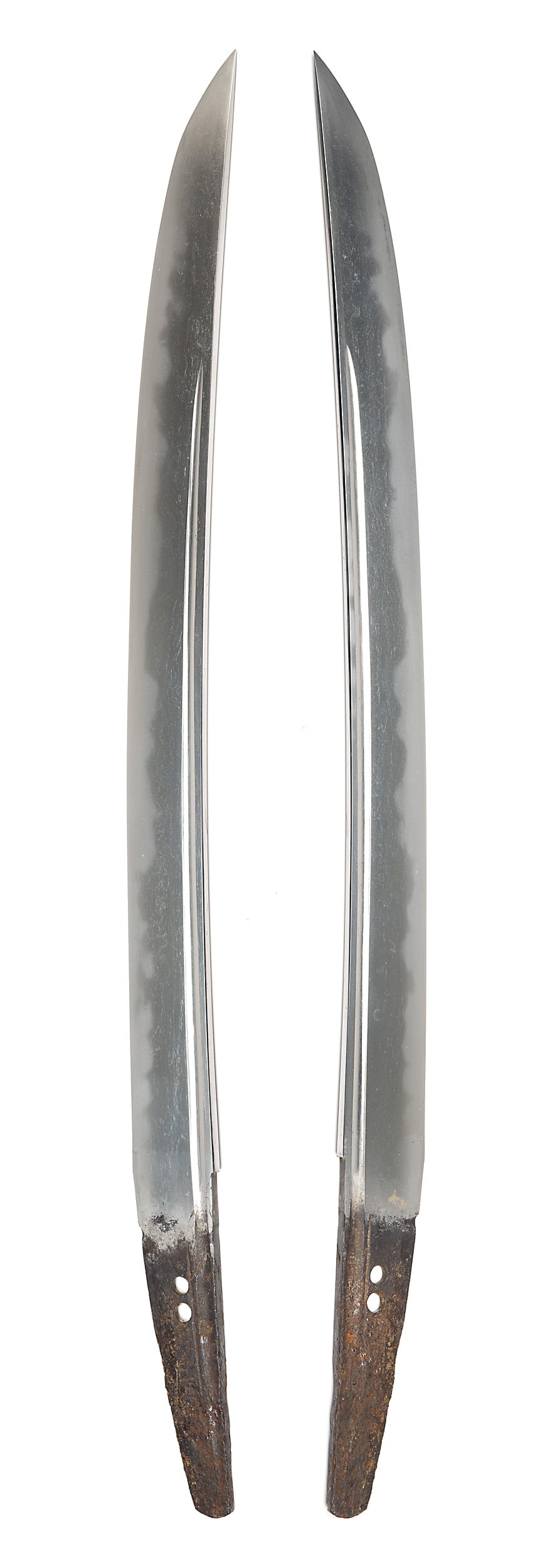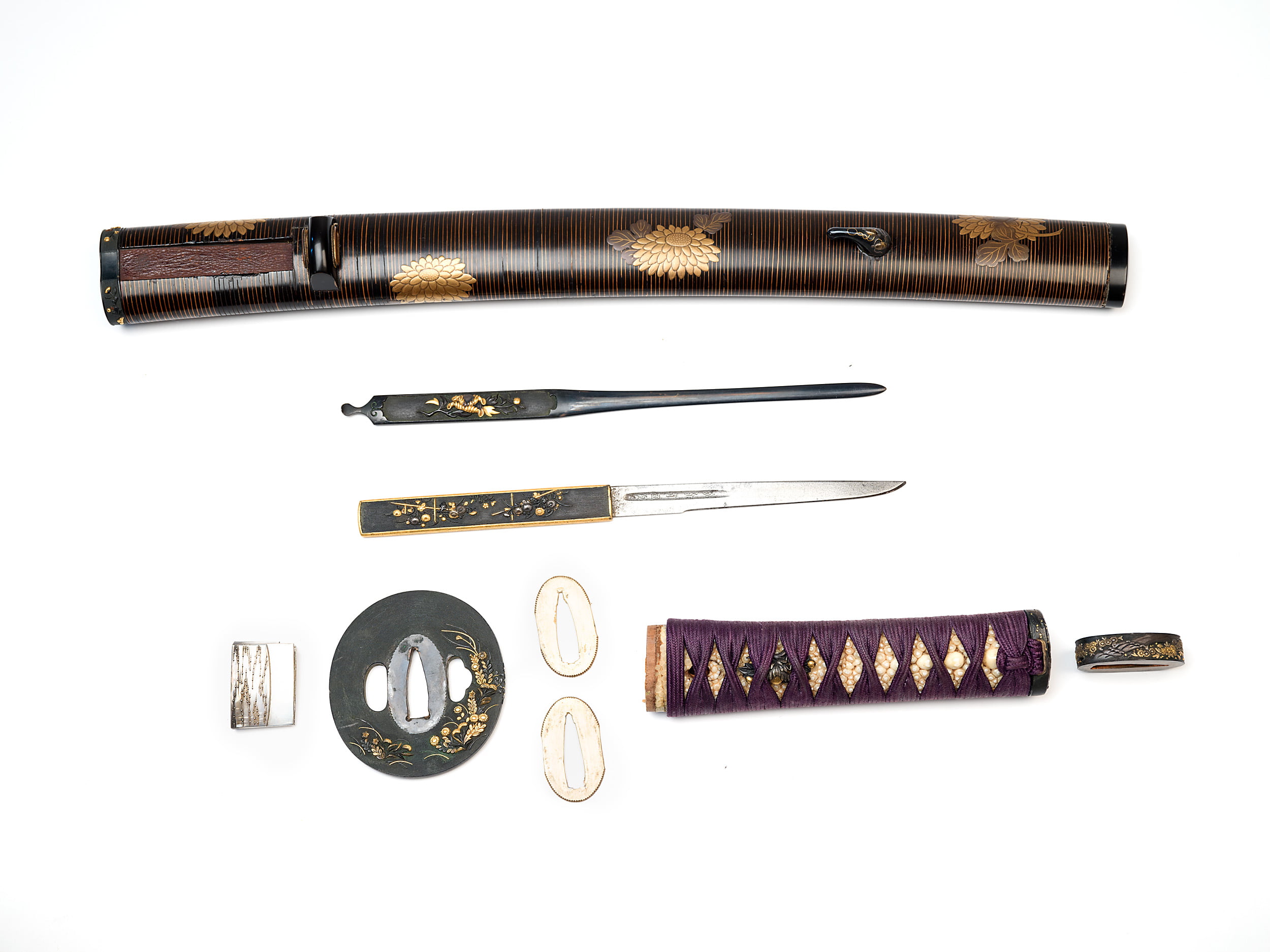A finely mounted Mino ko-wakizashi, the blade hirazukuri with three-quarter length grooves, iorimune, and shallow torii-zori curvature with mixed itame-mokume hada (uneven wood grain pattern) and gonome-midare hamon (wavy) with profuse nie clusters and sunagashi. The tang is untampered, ubu nakago with two mekugi ana holes and signed Kanefusa (of Seki in Mino province), probably Kanefusa III, from the middle of the 16th century. The length of the blade is 34.4cm and is secured in wooden shirasaya with descriptive sayagaki signed Fukunaga Suiken, one of the most renowned Japanese nihonto experts.
The koshirae with banded lacquer scabbard decorated with beautiful chrysanthemums in gold hiramakie, shakudo-nanakoji soritsuno, uragawara and kuchigane, with a shakudo-nanakoji kogai decorated with a peony spray, and a gilt framed kozuka with chrysanthemums on a bamboo fence, the menuki formed as peonies, the fuchi-kashira with chrysanthemums near a mountain stream, the tsuba with chrysanthemums and other autumn plants. The koshirae is fitted with a wood blade (tsunagi).
Provenance:
Christie’s, London, June, 1992
Private collection, Switzerland


Kunstberatung Zürich AG
Börsenstrasse 27 8001 Zürich Switzerland
VAT Number: CHE-113.608.140
+41 44 381 50 40
contact@kunstberatung-zurich.com
©2025 Kunstberatung Zürich AG No part of this website may be reproduced, distributed, stored in a retrieval system or transmitted in any form or by any means, electronic, mechanical, or otherwise, without the prior permission of Kunstberatung Zürich AG.